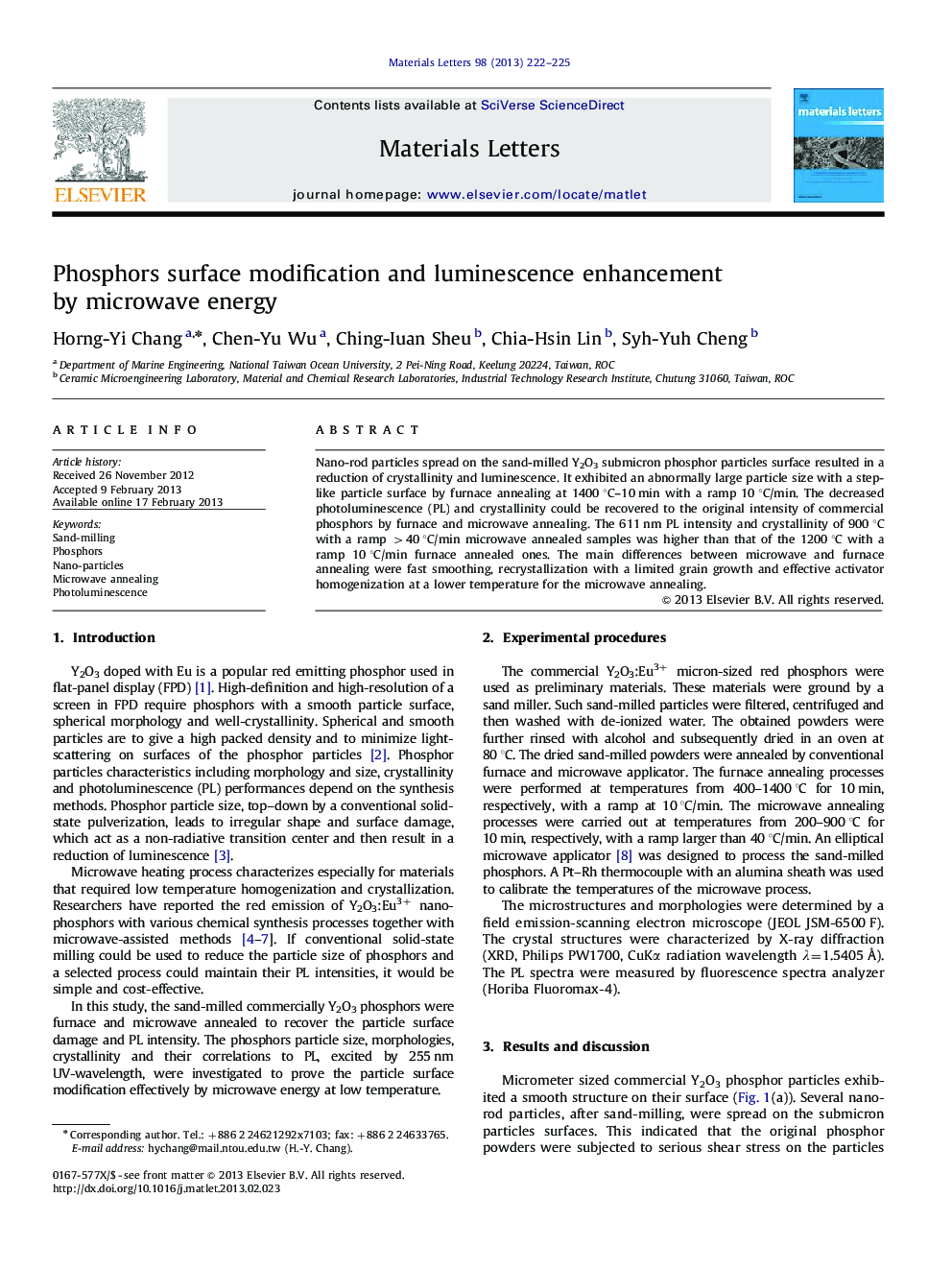| کد مقاله | کد نشریه | سال انتشار | مقاله انگلیسی | نسخه تمام متن |
|---|---|---|---|---|
| 1645495 | 1517289 | 2013 | 4 صفحه PDF | دانلود رایگان |

Nano-rod particles spread on the sand-milled Y2O3 submicron phosphor particles surface resulted in a reduction of crystallinity and luminescence. It exhibited an abnormally large particle size with a step-like particle surface by furnace annealing at 1400 °C–10 min with a ramp 10 °C/min. The decreased photoluminescence (PL) and crystallinity could be recovered to the original intensity of commercial phosphors by furnace and microwave annealing. The 611 nm PL intensity and crystallinity of 900 °C with a ramp >40 °C/min microwave annealed samples was higher than that of the 1200 °C with a ramp 10 °C/min furnace annealed ones. The main differences between microwave and furnace annealing were fast smoothing, recrystallization with a limited grain growth and effective activator homogenization at a lower temperature for the microwave annealing.
Figure optionsDownload as PowerPoint slideHighlights
► Nano-rod particulates spread on the submicron particle surface after sand-milling.
► The decreased PL intensity could be recovered by furnace and MW annealing.
► Microwave (MW) contributed to smooth and recrystallization of nano-rod particles.
► Fast smoothing/recrystallization/effective activator homogenization by MW.
Journal: Materials Letters - Volume 98, 1 May 2013, Pages 222–225